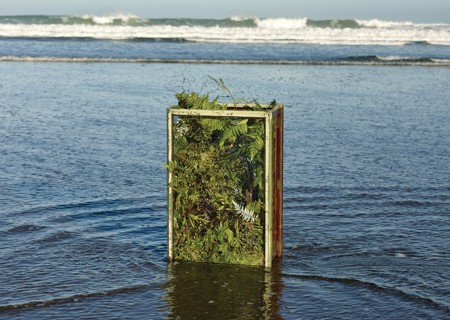Penicillin. The microwave. Pacemakers. Many of the world’s most useful discoveries were stumbled upon by accident.
So was the small glass greenhouse the British Empire used to take plants from all over the world back to England, and introduce its own flora to the colonies too, like gorse, broom, pine and thousands more.
Botanical artist Felicity Jones and photographer Mark Smith spent seven years with the stories of the Wardian case, invented by chance in 1829 by Dr Nathaniel Bagshaw Ward - a physician and keen gardener.
“The case became more than just something that moved plants,” Jones says.
“It became a metaphor, really, for containment and control.”
They photographed their version of the Wardian case, packed with plants both local and foreign, in scenic spots throughout Aotearoa and England to tell, challenge and breathe new life into the case’s story.
Ward’s glass case created a micro-environment where plants could survive without intervention for months, sometimes years. His first trial, a moth cocoon, lasted three years, just on the sunshine streaming into the case, and the condensation dripping from the glass.
Read the rest of the interview at the Sunday Star-Times here.


